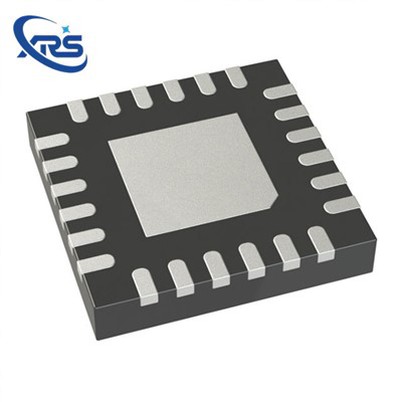How Operational Amplifiers Work
Leave a message
Operational amplifier (referred to as "operational amplifier") is one of the electronic components commonly used in the field of analog circuits, belongs to the active component, with a number of end buttons, can achieve the signal of addition, subtraction, multiplication and division, proportional operations, differentiation and integration and other calculations, can also be used to process electrical signals, such as comparing and selecting the amplitude of the signal. Nowadays operational amplifiers are widely used in automatic control systems and various measuring devices by virtue of their advantages, which is of great significance to the development of electronic technology. Let's understand how it works:
1. Basic principles
The op amp has three ports, of which there are two input ports, respectively "+" and "-", and one output port. When the input signal is input to the amplifier through the "-" port, the output signal at the output end is inversely phase with the input signal; On the contrary, when the input signal is input to the amplifier through the "+" port, the output signal at the output end is in phase with the input signal; When two input ports input signals at the same time, the operational amplifier implements a reduction operation, and the output signal is in phase with the larger side. So, the operational amplifier is basically a voltage amplifier. An ideal operational amplifier must have the following characteristics: infinite input impedance, output impedance equal to zero, infinite open loop gain, infinite common mode repulsive ratio of parts, infinite bandwidth.
When an op amp is usually used, its output is connected to its inverting input node, forming a negative feedback state. The reason is that the voltage gain of the operational amplifier is very large, ranging from hundreds to tens of thousands of times, and the use of negative feedback can ensure the stable operation of the circuit. However, this does not mean that operational amplifiers cannot be connected to positive feedback; on the contrary, positive feedback configuration of operational amplifiers is a common component in many systems that need to generate oscillating signals.
2. Open loop circuit
The open-loop operational amplifier is shown in Figure 2. When an ideal operational amplifier operates in an open loop mode, the relationship between its output and input voltage is as follows:
Vout=(V+-V-)*Aog
Where Aog stands for the open-loop differential gai of the operational amplifier (open-loop differential gai) Because the open-loop gain of the operational amplifier is very high, even if the input differential signal is very small, the output signal will still be "saturated" (saturation), resulting in non-linear distortion. Therefore, operational amplifiers rarely appear in circuit systems as open-loop loops, with a few exceptions being comparators, whose outputs are usually "0" and "1" of logical level bits.
3. Closed-loop negative feedback
By connecting the inverse input and output of the operational amplifier, the amplifier circuit is in a negative feedback configuration, and the circuit can often be simply referred to as a closed-loop amplifier. Closed-loop amplifiers can be divided into inverting amplifiers and non-inverting amplifiers according to the end point of the input signal into the amplifier.
The inverting closed-loop amplifier is shown in Figure 3. Assuming that this closed-loop amplifier uses an ideal op-amp, the two inputs of the op-amp are virtual ground because the open-loop gain is infinite, and the relationship between the output and input voltage is as follows:
Vout=-(Rf/Rin)*Vin
The non-inverting closed-loop amplifier is shown in Figure 4. Assuming that this closed-loop amplifier uses an ideal operational amplifier, the voltage difference between the two input terminals of the operational amplifier is almost zero because its open-loop gain is infinite, and the relationship between the output and input voltage is as follows:
Vout = ((R2/R1)+1)* Vin
4. Closed-loop positive feedback
The forward input and output of the operational amplifier are connected, and the amplifier circuit is in a positive feedback condition. Because the positive feedback configuration works in a highly unstable state, it is mostly used in applications that need to generate oscillating signals.
That's how operational amplifiers work. In practical applications, the selection of the op amp must take into account the design purpose, the signal level of the target, the closed-loop gain, the required accuracy, and other factors such as environmental conditions, and translate the required performance into the corresponding parameters of the op amp. Although the operation amplifier circuit is difficult, but no matter how complex the circuit, as long as the use of appropriate methods, seize the basic characteristics of the op amplifier circuit, all the problems can be answered.






